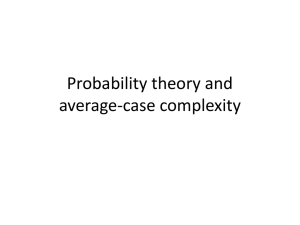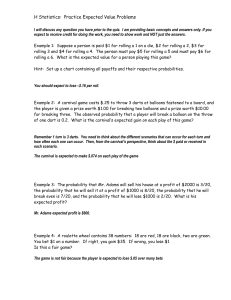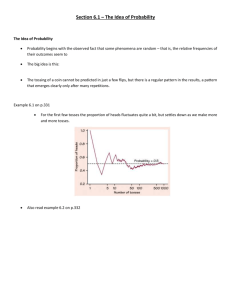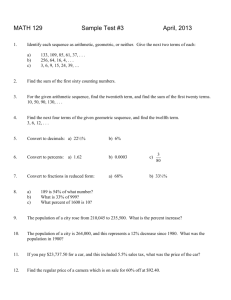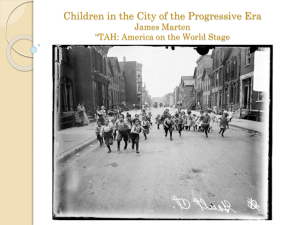B. Picchetti
advertisement
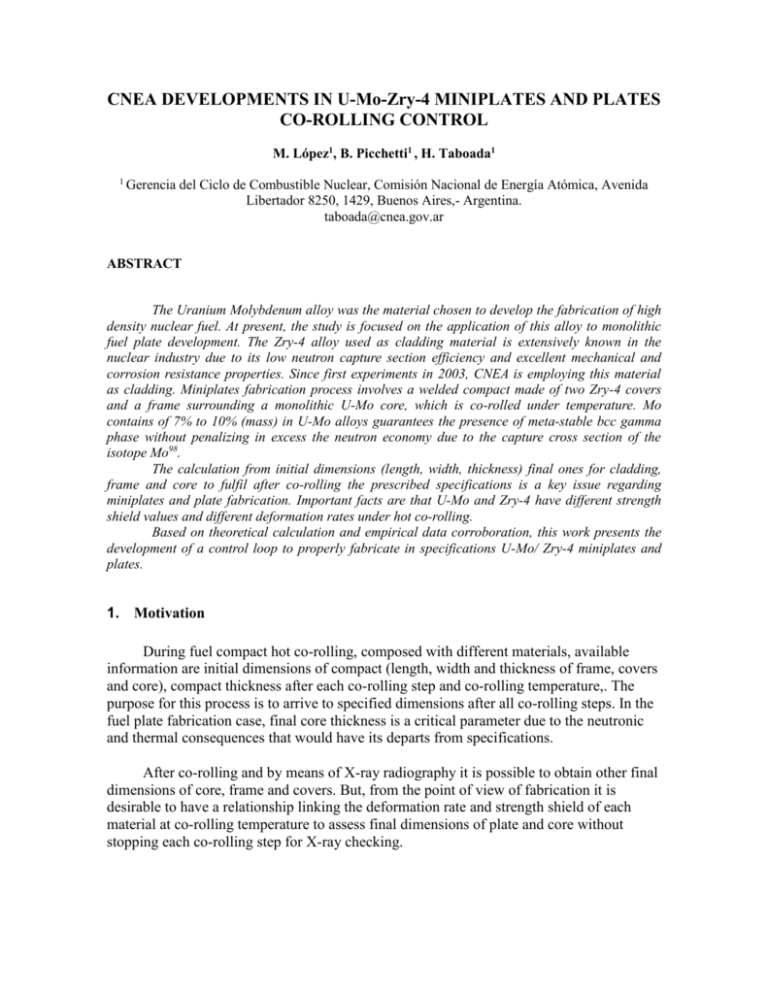
CNEA DEVELOPMENTS IN U-Mo-Zry-4 MINIPLATES AND PLATES CO-ROLLING CONTROL M. López1, B. Picchetti1 , H. Taboada1 1 Gerencia del Ciclo de Combustible Nuclear, Comisión Nacional de Energía Atómica, Avenida Libertador 8250, 1429, Buenos Aires,- Argentina. taboada@cnea.gov.ar ABSTRACT The Uranium Molybdenum alloy was the material chosen to develop the fabrication of high density nuclear fuel. At present, the study is focused on the application of this alloy to monolithic fuel plate development. The Zry-4 alloy used as cladding material is extensively known in the nuclear industry due to its low neutron capture section efficiency and excellent mechanical and corrosion resistance properties. Since first experiments in 2003, CNEA is employing this material as cladding. Miniplates fabrication process involves a welded compact made of two Zry-4 covers and a frame surrounding a monolithic U-Mo core, which is co-rolled under temperature. Mo contains of 7% to 10% (mass) in U-Mo alloys guarantees the presence of meta-stable bcc gamma phase without penalizing in excess the neutron economy due to the capture cross section of the isotope Mo98. The calculation from initial dimensions (length, width, thickness) final ones for cladding, frame and core to fulfil after co-rolling the prescribed specifications is a key issue regarding miniplates and plate fabrication. Important facts are that U-Mo and Zry-4 have different strength shield values and different deformation rates under hot co-rolling. Based on theoretical calculation and empirical data corroboration, this work presents the development of a control loop to properly fabricate in specifications U-Mo/ Zry-4 miniplates and plates. 1. Motivation During fuel compact hot co-rolling, composed with different materials, available information are initial dimensions of compact (length, width and thickness of frame, covers and core), compact thickness after each co-rolling step and co-rolling temperature,. The purpose for this process is to arrive to specified dimensions after all co-rolling steps. In the fuel plate fabrication case, final core thickness is a critical parameter due to the neutronic and thermal consequences that would have its departs from specifications. After co-rolling and by means of X-ray radiography it is possible to obtain other final dimensions of core, frame and covers. But, from the point of view of fabrication it is desirable to have a relationship linking the deformation rate and strength shield of each material at co-rolling temperature to assess final dimensions of plate and core without stopping each co-rolling step for X-ray checking. 2. Introduction 2.1 Fluency condition Hot rolling of metallic sheaths is a plastic deformation process by plane compression at constant volume. Assumption that width of the piece remains constant during rolling process is consistent with experimental variation of 1.5 – 2%. The piece is free to flow along the length direction. The plastic deformation depends on deviator tensor components which, along the principal axes, arei: s xy xy m . xy ; m i / 3 0 0 1 m s 0 2 m 0 0 0 3 m Its 2° order invariant is: I 2 (s) 1 ( 1 2 ) 2 ( 2 3 ) 2 ( 3 1 ) 2 6 (Ec.2.1.1) From it is formulated the equivalent tensor and Von Mises fluency condition: the equivalent tensor is greater to the strength shield _ 2.2 ( 1 2 ) 2 ( 2 3 ) 2 ( 3 1 ) 2 F Y 2 (Ec.2.1.2) Dependence of the strength shield on temperature As an example the U-Mo strength shield vs. T(°C) graph is presentedii. A similar one is possible to obtain for Zry-4: Y(U-Mo) 1000 800 600 400 Y(U-Mo) 200 0 0 200 400 600 Figure 2.2.1: Strength shield as a function of temperature (°C) It is worthy to say that no data is available for U-x%Mo neither for Zry-4 at corolling temperature (650 °C) 2.3 Rolling scheme Main geometrical parameters are shown below. If ap and Lp stand for plate width and length and e0, ef for initial and final thickness during a rolling step, the rolling surface over which acts the rolling force isiii: a p * Lp a p * R 2 ( R e0 e f 2 )2 a p * R(e0 e f ) (Ec.2.3.1) Figure.5.4.1: Acting forces during rolling process scheme Taking into account the acting forces, the rolling condition it is shown to be: e 2 R e R Let us call e* the thickness difference that makes equal both terms above. At this point it is worthy to keep in mind that while experimental e ranges typically around 0.1 to 0.5 millimeters (for both phases, U-Mo and Zry-4), calculated e* ranges around 1.5 to 3mm (from quasi non friction rolling: to sticky rolling: for a roller radius = 137,5 mm). So there is a factor that equals e*=e: e R (Ec.2.3.2) 2.4 Rolling force and applied power during the co-rolling process Rolling force is the product of the strength shield times the rolling surface and a variable factor involving the friction parameter between the piece and the rollers and rolling pre and post thicknesses: . R.en F .a. R.en .1 en1 en _ _ .en .a. R.en .1 en1 en (Ec.2.4.1) , where 2.3.2 was recalled. P equals the product of the rolling force times the tangential velocity. This equals the rolling length times the roller angular velocity P F .vt; vt Lp. (Ec.2.4.2) Angular velocity equals 2π times the rolling machine frequency ν (1/s) so we have: _ .en 1 n P 2 .a.R.en .1 2 . a . R . e . 1 n 1 n en1 en _ (Ec.2.4.3) , where nen/ en-1. For most cases during a smooth co-rolling process 0.95 > en/ en-1 > 0.8, so bracket in 2.3.4 ranges from 1 to 2.25 no matter which phase is it. The applied power during co-rolling process means deformation energy per unit time which plastically deforms both materials U-Mo and Zry-4. In this case involved materials have different deformation rates and strength shields, so cancelling common factors and taking into account n possiblevalues it stands: en U Mo en Zry 4 (Ec.2.4.4) I.e. U Mo Zry 4 en en Zry 4 U Mo U Mo Zry 4 en en Zry 4 U Mo e e 0 ef 0 ef Zry 4 U Mo (Ec.2.4.5) 2.5 Experimental findings and thickness calculations After co-rolling several miniplates and measuring through X-ray radiography final dimensions of each phase it was possible to prepare the following table: TABLE 2.5.1 ESSAY 1 2 3 4 5 6 7 (1) (3)=1/2*(1-2) (2) CORE MINIPLATE COVER (3)/(2) THICKNESS THICKNESS THICKNESS DIFFERENCE DIFFERENCE DIFFERENCE DIFFERENCE RATIO (e0-ef) (mm) (e0-ef) (mm) (e0-ef) (mm) 4,48 4,55 4,826 4,83 4,6 5,13 4,96 0,636 0,592 0,72 0,713 0,65 0,661 0,731 1,922 1,979 2,053 2,059 1,975 2,234 2,114 3,024 3,343 2,853 2,889 3,037 3,379 2,892 STANDARD DEVIATION: 0,218 AVERAGE VALUE: 3,060 So results of table 2.5.1 and equation 2.4.6 give us an accurate value of thickness difference quotient which allows a control loop during co-rolling: en1 en Zry 4 e0 e f Zry 4 en1 en U Mo e0 e f U Mo 3.06 0.22 (Ec.2.5.1) Consider now a co-rolling strategy built by consecutive miniplate thickness reductions so that 0.95 > en/ en-1 = n > 0.8. After some operations we have: eFMP F eFMP1 ... iF1 i e0MP e0MP eFMP eFMP iF1 i e e0 eF Zry4 e ef MP F eF U Mo U Mo e 0 MP 0 F i 1 eFMP e0 eF U Mo 2 e0 e f U Mo i 1 e0 eF U Mo 1 2e0 eF e MP F F i 1 U Mo e i 1 1 0 7.56 1 1 3.06 0.22 U Mo eF U Mo e MP F F i 1 i 1 1 6.68 Ec 2.5.2 So, given the final product specification for both phases (and so for the miniplate), it is possible to reconstruct initial (and at any stage) length and thickness if co-rolling strategy n is provided. Having calculated initial thickness for U-Mo phase it follows that: 2.84 * eF Zry4 e U Mo 0 eUF Mo e0 Zry4 3.28 * eF Zry4 e U Mo 0 eUF Mo Ec 2.5.3 Both last inequalities provide the control co-rolling process that we were looking for. “Elementos de la Teoría de Plasticidad”. Principios Fundamentales, .Alfredo Sáenz López-A.O. Lucaioli CNEA-AC 11/83 PMTM/A-47 ii Douglas Burkes, BWXT R&D manager. Personal communication iii “Fundamental concept in metal rolling” Tapany Undophol, Suranaree University of Technology, 2007 i
